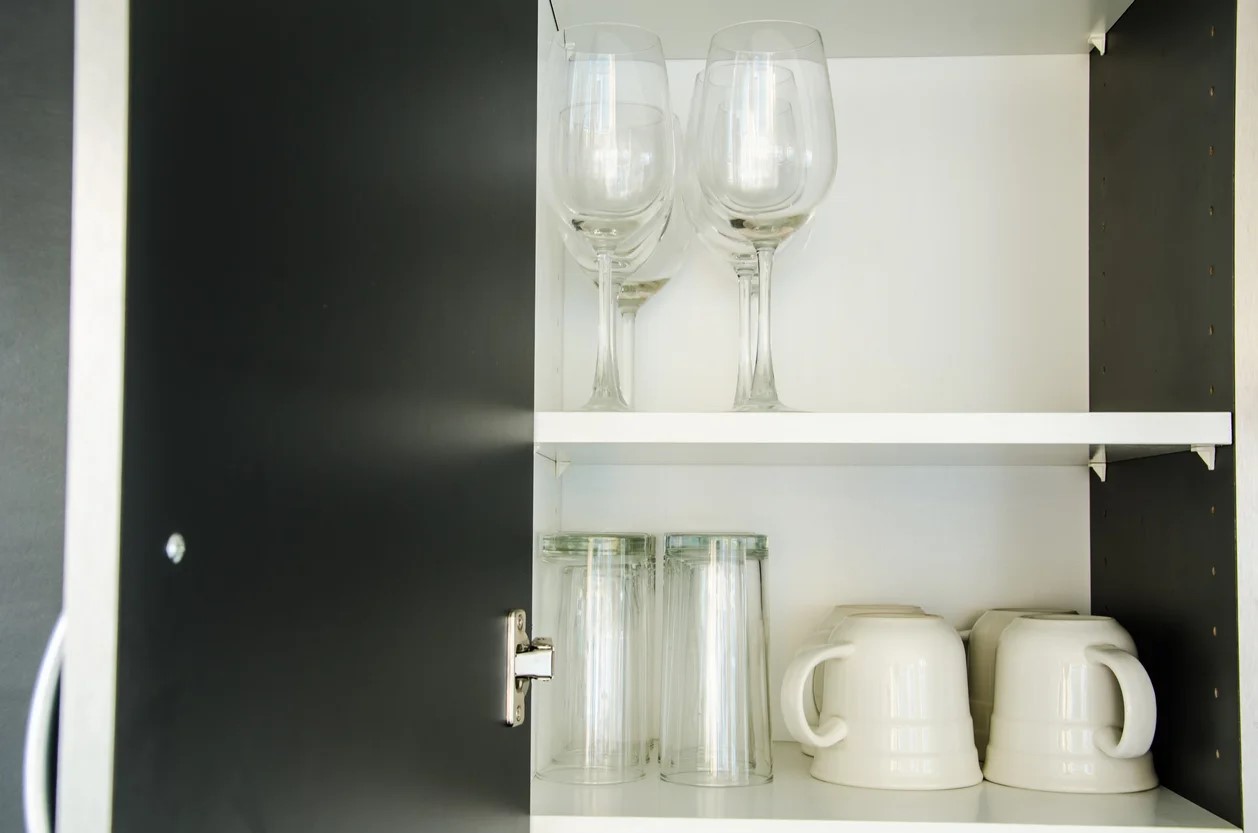

Articles
What Should AC Be Set At
Modified: September 2, 2024
Looking for articles about what the AC should be set at? Get expert advice and tips on finding the optimal temperature for your air conditioning system.
(Many of the links in this article redirect to a specific reviewed product. Your purchase of these products through affiliate links helps to generate commission for Storables.com, at no extra cost. Learn more)
Introduction
Welcome to the world of air conditioning, where comfort and temperature control are at your fingertips. Whether you’re trying to beat the summer heat, find relief from the sweltering temperatures, or simply create a pleasant indoor environment, setting the right temperature for your AC unit is crucial. But what exactly is the ideal temperature? And how can you optimize your settings to save energy and minimize your carbon footprint?
In this article, we’ll explore the ins and outs of setting the AC temperature, taking into consideration various factors such as personal preferences, energy efficiency, and common misconceptions. By the end, you’ll have a good understanding of how to strike the perfect balance between comfort and conservation.
So, let’s dive in and discover what temperature your AC should be set at!
Key Takeaways:
- Find the perfect AC temperature by considering personal comfort, climate, and energy efficiency. Experiment with settings between 72-78°F and implement energy-saving tips for a comfortable and sustainable living space.
- Debunk common AC temperature misconceptions to make informed decisions. Setting the AC too low won’t cool faster, and leaving it on all day isn’t efficient. Balance comfort and energy savings for a better indoor environment.
Read more: What Temp Should AC Be Set At
What is the ideal temperature for AC?
The ideal temperature for your AC can vary depending on a few factors, including personal comfort, the climate you live in, and the energy efficiency goals you have. Generally, a temperature setting between 72 and 78 degrees Fahrenheit (22 to 25 degrees Celsius) is considered comfortable for most people. However, it’s important to note that everyone’s comfort levels are different, so finding the perfect temperature may require some trial and error.
When setting the AC temperature, it’s essential to consider the purpose of the room. For example, bedrooms are typically set to a slightly cooler temperature for better sleep, while living areas might have a slightly higher temperature to accommodate more activity and movement.
If you live in a hot and humid climate, you may find it more comfortable to set your AC to a lower temperature, closer to 72 degrees Fahrenheit (22 degrees Celsius), to offset the external heat and humidity. On the other hand, if you live in a milder climate, you might prefer to set your AC to a higher temperature around 78 degrees Fahrenheit (25 degrees Celsius), as it can help conserve energy and reduce utility bills.
It’s worth mentioning that setting the AC temperature too low can lead to excessive energy consumption and put a strain on both your wallet and the environment. So, it’s essential to find a balance between comfort and energy efficiency.
Next, let’s explore some factors to consider when setting the AC temperature.
Factors to consider when setting the AC temperature
When determining the ideal temperature for your AC, it’s important to take into account several factors that can influence your comfort and energy efficiency. Let’s explore these factors:
- Personal comfort: Your personal comfort should be the primary consideration when setting the AC temperature. Some individuals prefer cooler temperatures, while others are comfortable with slightly warmer settings. Experiment with different temperatures to find what works best for you.
- External climate: The climate you live in plays a significant role in setting the AC temperature. Hotter and more humid climates may require lower temperature settings to maintain comfort, while milder climates may allow for higher temperature settings.
- Insulation and ventilation: The insulation and ventilation of your home can impact how well it retains or loses cool air. Proper insulation and well-maintained ventilation systems help maintain a consistent temperature, allowing for more efficient AC usage. Ensure windows and doors are properly sealed and consider using insulated curtains to minimize heat transfer.
- Occupancy and activity level: The number of people and level of activity in a room can influence the AC temperature. A crowded room with a high level of activity might require a slightly cooler temperature to counteract the heat generated by individuals and equipment.
- Time of day: Consider adjusting the AC temperature based on the time of day. Cooler temperatures might be preferred during the day, while slightly higher temperatures can be set at night when natural outdoor cooling is more prevalent.
By taking these factors into account, you can find the perfect balance between personal comfort and energy efficiency when setting the AC temperature. However, there are also some energy-saving tips that can help you optimize your AC settings, which we will explore next.
Set your AC to 78°F for a balance of comfort and energy efficiency. Increase the temperature when you’re away to save on energy costs.
Energy saving tips for setting the AC temperature
Setting the AC temperature wisely not only helps you stay comfortable but also saves energy and reduces your carbon footprint. Here are some energy-saving tips to consider:
- Use programmable thermostats: Invest in a programmable thermostat that allows you to schedule temperature changes throughout the day. Program higher temperatures when you’re away or asleep and lower temperatures when you’re home and active.
- Utilize natural ventilation: Take advantage of cooler evening and early morning temperatures by opening windows to allow natural ventilation. This can help cool down your home without relying solely on the AC.
- Consider ceiling fans: Use ceiling fans in conjunction with the AC to circulate cool air more effectively. Ceiling fans create a wind-chill effect that can make you feel cooler, allowing you to set the AC temperature a bit higher.
- Regular maintenance: Keep your AC unit in good condition by regularly cleaning or replacing air filters to ensure efficient airflow. Additionally, schedule professional maintenance to check for any leaks or issues that may impact its performance.
- Utilize shades and curtains: During the hottest parts of the day, close blinds, shades, or curtains to prevent direct sunlight from heating up your space. This reduces the workload on your AC unit and helps maintain a more comfortable indoor temperature.
- Seal air leaks: Inspect your home for any air leaks around windows, doors, and ductwork. Use weatherstripping or caulk to seal gaps and prevent cool air from escaping, helping your AC work more efficiently.
- Opt for energy-efficient AC units: When choosing or upgrading your AC unit, look for energy-efficient models with a high SEER (Seasonal Energy Efficiency Ratio) rating. These units consume less energy and can result in significant energy savings over time.
By implementing these energy-saving tips, you can minimize energy consumption while maintaining a comfortable indoor temperature. However, it’s important to address common misconceptions to ensure you’re making informed decisions when setting your AC temperature.
Common misconceptions about setting the AC temperature
When it comes to setting the AC temperature, there are several common misconceptions that can lead to unnecessary energy usage or discomfort. Let’s debunk some of these misconceptions:
- Setting the AC temperature lower cools the room faster: This is a common misconception. AC units are designed to cool at a consistent rate, regardless of the temperature setting. Setting the temperature extremely low won’t cool the room faster; instead, it will consume more energy and may make the room uncomfortably cold.
- Leaving the AC on all day is more efficient than turning it on and off: Many believe that leaving the AC running all day is more energy-efficient than turning it on and off when needed. However, this is false. It’s more energy-efficient to turn off the AC when you’re not at home or when the room is adequately cooled.
- Setting the AC to a colder temperature saves energy: While it’s true that you’ll feel cooler when the AC is set to a lower temperature, it doesn’t necessarily mean you’re saving energy. The AC unit works harder and consumes more energy to maintain a lower temperature. Setting the temperature to a slightly higher level can still provide comfort while reducing energy consumption.
- Cranking up the AC will cool the room faster after returning home: Similar to the first misconception, turning the AC to a very low temperature when you come home won’t cool the room faster. The AC will cool the room at the same rate, regardless of the starting temperature. It’s best to set the desired temperature and allow the AC to work steadily.
- AC units need to work harder to cool down a space after being turned off: Some believe that turning off the AC will cause it to work harder to cool down the space once it’s turned back on. However, this isn’t accurate. AC units cool the air by removing heat, so they don’t have to work harder to cool a space that’s already at a higher temperature.
By understanding and debunking these common misconceptions, you can make more informed decisions when it comes to setting the AC temperature. Remember, the goal is to find a balance between comfort and energy efficiency for a better indoor environment.
Read more: What Temp Should AC Blow
Conclusion
Setting the right temperature for your AC is essential for creating a comfortable indoor environment while also minimizing energy consumption. While the ideal temperature can vary based on personal preferences, climate, and other factors, it’s generally recommended to set the AC temperature between 72 and 78 degrees Fahrenheit (22 to 25 degrees Celsius).
Factors such as personal comfort, external climate, insulation, occupancy, and time of day should be considered when determining the ideal temperature. Additionally, implementing energy-saving tips like using programmable thermostats, utilizing natural ventilation, and regular maintenance can help save energy and reduce your carbon footprint.
It’s important to debunk common misconceptions around setting the AC temperature, such as setting it extremely low to cool the room faster or leaving the AC on all day for energy efficiency. These misconceptions can lead to unnecessary energy usage and discomfort.
By finding the right balance between comfort and energy efficiency, you can create a pleasant indoor environment while also being mindful of your energy consumption. So, be mindful of the temperature you set for your AC, explore energy-saving options, and make informed decisions to ensure a comfortable and sustainable living space.
Stay cool, stay comfortable, and enjoy the benefits of a well-regulated AC system!
Frequently Asked Questions about What Should AC Be Set At
Was this page helpful?
At Storables.com, we guarantee accurate and reliable information. Our content, validated by Expert Board Contributors, is crafted following stringent Editorial Policies. We're committed to providing you with well-researched, expert-backed insights for all your informational needs.















0 thoughts on “What Should AC Be Set At”